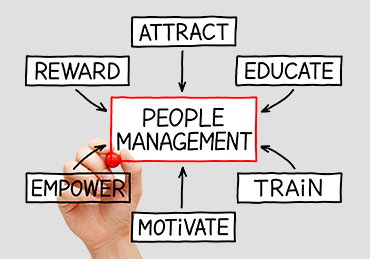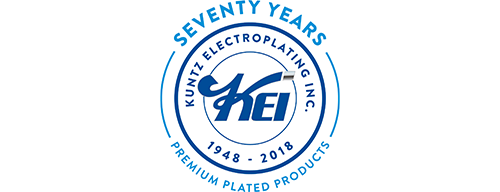
Business Communication an Interpersonal Skills Management Learning System
Business Communication an Interpersonal Skills Management Learning System teaches powerful communication strategies that are used to approach, manage, and ultimately resolve day-to-day conflicts and “people issues”. The program is made up of three modules, each is a building block targeting specific communication and management skills. Training is conducted in cohorts of no more than 10 participants.
Step 2 (Follow-up)
Prerequisite; Step 1

Refresher Workshop
Graduates are invited back to the training room for a full review of the concepts, skills, approaches, and strategies imparted in the core program (step 1). The workshop consists of two – 3.5hr sessions with a maximum of 10 participants. The first session focuses on the review part of the effort while session 2 concentrates on activities that give graduates the opportunity to demonstrate the strategies learned in Step 1.
Step 3 (Optional)
Prerequisite; Step 1

Performance Development a Leadership Approach to High Performance
Most organizations have at their disposal a variety of tools to measure performance levels, compare them to expected ones, and arrive at ways to achieve peak performance from their employees; all in an effort to improve and maintain organizational performance. This paper trail is indispensable and requires consistent application and monitoring in order to be effective and reach the intended objectives.
What Graduates Are Saying
(The following comments are taken from actual graduate evaluations)
Ron R.
Supervisor
"Taught me to plan & focus my conversations. Defining a clear objective is key"
Paul C.
Quality Auditor
"Your insight and experience were appreciated. You spoke to us as adults and I learned new skills and honed others."
Neil W.
Marketing
"Course is very structured. Method makes sense. It works and I’m using it. It benefits everyone."
Eva M.
Administrator
"This interactive program provided me with knowledge and tools on better managing difficult situations that arise in every workplace and in personal life."
Brandon D.
Manager
"The bulk of this content was new to me, and it is invaluable in what it can provide to both my skill set & interactions with others. Excellent product & execution."
Jodie H.
Front-line Supervisor
"I believe this will aid in my skills as a supervisor & improve communication in the professional world."
Mike P.
Director
"Building positivity & investing in our people through techniques learned in your program will be very beneficial for our division."
Amanda N.
Manager
"The facilitator is very knowledgeable and practices what he preaches."
Caralee G.
Supervisor
"Well facilitated, great engagement. I’m only upset that not everyone can attend to learn the skill sets taught(to have everyone on the same page)."
Nathan H.
Supervisor
"I appreciate a facilitator that loves his job and executes with passion. Thank you!"
Shahrzad K.
Engineer
"Knowing the structure of how to communicate is a great tool for me to improve my communication at workplace. Because of the role-plays and getting pushed out of my comfort zone, it will be a lot easier for me to deal with different situations at work place."
Keshia W.
Manager
"My emails have improved significantly. I am getting prompt and targeted replies. I am much better @ keeping meetings focused on the objective(s)."
Jason A.
Manager
"I found this program allowed me to adjust my approach and will be valuable moving forward in my career and at home."
Oneil S.
Supervisor
"The facilitator was very clear, concise, and approachable. He did an amazing job."
Alex L.
Supervisor
"I am able to handle the difficult conversations easier than before by planning out the logistics of a conversation."
Frederick S.
Supervisor
"Great concrete ways to go about managing difficult conversations. General awareness of my communication skills and to understand where others are coming from."
Chris W.
Manager
"Excellent content hands-on approach! Real situations helped to better understand."
Dawn Z.
Manager
"Learned different communication skills to deal with difficult situations. Feel more prepared to deal with them."
Emanuel S.
Manager
"Rob is an excellent instructor. Made me feel very comfortable about myself and how to deal with situations."
Linda R.
Manager
"We have practiced the skills during/between the sessions. It works & I will keep doing it daily in my interactions with others."
Judi D.
Supervisor
"I am coming away with ways to deal with situations that have been problematic for me in the past. I have a new view on steps I need to ensure effective communication as a supervisor."
Shawnah K.
Inside sales
"Role playing – being put into a situation and having to solve it with assistance takes the fear out of using these new skills in my environment."
Jeremy B.
Manager
"Training was very beneficial to the team and to help unify our strengths as leaders. Training will help to ensure consistency in our interactions with members. Confidence in abilities to communicate has improved with the team."
Harry L.
Manager
"Excellent knowledge and explanations – well done. Great Leadership and explaining how this training can be transferred towards improving the business."
Greg A.
Assistant Manager
"It was well done. Thorough, specific, to the point. Content was easy to read, understand, and implement. Very pleased."
A few of Our Clients










